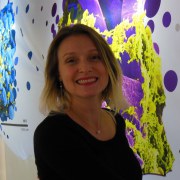To become strong STEM thinkers, children need to play. How can we provide rich play experiences that give children the skills they need in order to deal with the challenges of the future?
Children are born curious and deeply enjoy testing their surrounding environment. Environments with richer experimental facilities motivate innovation and creativity of children. This session will focus on how this translates into children’s exhibition spaces.
- How do we incorporate recent research in early learning to the design of children's spaces?
- How can we empower children through play to develop skills, and engage with technologies and issues that will be relevant to their futures ?
- Should the experience by children-led, parent-led or a shared learning experience?
Facilitator
Session speakers
Museographer
Cité des sciences et de l'industrie
Paris
France
The Cité des enfants is a permanent children space at the Cité des
sciences et de l’industrie that draws 750,000 visitors each year. Recently, we have added two new types of experiences for our young audience: a lab for babies and temporary exhibitions for children.
"What did we consider when designing these projects? What principles guided us? What makes a successful, child-centric design?
Lead Interactive Gallery Curator
London
United Kingdom
How do we help small people do big science? Play. The Science Museum in London is renewing its Early Years approach with an aim to build young children’s Science Capital through rich play experiences. We’re asking questions like - "What does it look like when children ‘play like scientists’?” "How do you design a space that encourages play?" and "How do you make science meaningful for young children?"
Director of Exhibits
Science World BC
Vancouver
Canada
Wonder is Science World’s gallery for early learners. This highly interactive gallery offers 3,300 square feet for children age 0–5 to crawl, splash, build, climb and experiment. One of our biggest priorities with Wonder was to use early childhood development research to inform every design choice, from the layout of the space to the choice of interactives. We rigorously prototyped every aspect of the gallery, from size and scale of exhibits to the language used on activity cards for parents. Co-learning opportunities were deliberately embedded throughout the gallery to enable adult caregivers to become active participants in their children’s learning.




